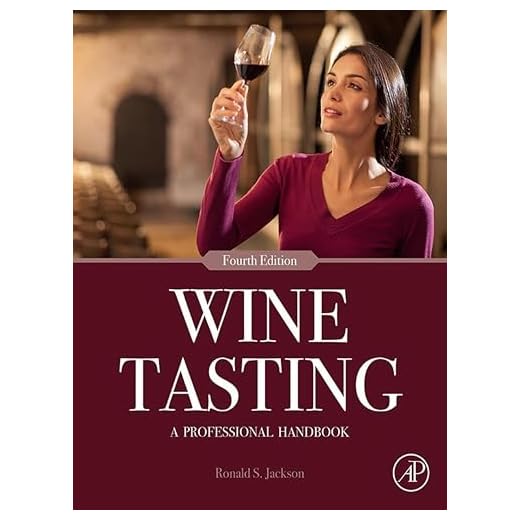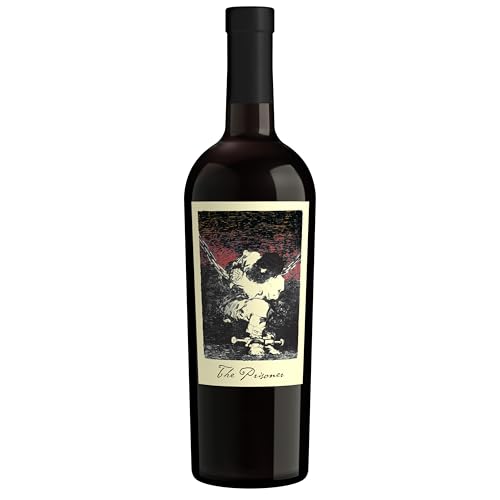



Typically, unopened bottles can be enjoyed for a period ranging from 3 to 20 years, depending on various factors including grape variety and storage conditions. For instance, full-bodied varietals like Cabernet Sauvignon can age gracefully for a decade or more, while lighter options may reach their peak within a shorter timeframe.
Storage plays a critical role in preserving the quality of these beverages. A consistent environment, away from direct sunlight and temperature fluctuations, is ideal. Aim for a cool, dark space with temperatures between 50 to 65 degrees Fahrenheit, and maintain humidity levels around 70% to prevent corks from drying out.
It’s advisable to note specific characteristics of the bottle itself. Look for the vintage year, as older bottles often have a reduced lifespan compared to more recent releases. In addition, consider the closure type; cork closures provide better aging potential than screw tops, although advancements in technology have improved the longevity of screw-capped options.
Optimal Storage Duration for Bottled Varietals
For structured types, a typical shelf life ranges from 5 to 10 years. However, some exceptional vintages can endure up to 20 years or more. Proper storage conditions significantly influence this timeframe. Keep them in a cool, dark place with stable temperature and humidity levels.
Factors Influencing Longevity
Acidity, tannin content, and sugar levels are key components affecting preservation. Higher acidity and tannin levels typically mean a longer lifespan. A well-crafted bottle from a reputable region, such as Bordeaux or Napa Valley, often has superior aging potential. Remember, the closure type also plays a role; cork-sealed bottles can breathe over time, enhancing complexity.
Maintenance Tips
Ensure to store bottles horizontally, allowing the cork to remain moist and prevent air from seeping in. Avoid temperature fluctuations and direct sunlight. For cleaning any wine-related tools, consider using the best scrubber for stainless steel pans to maintain your equipment in top condition.
Understanding the Aging Potential of Different Red Wines
For optimal enjoyment, certain varietals can be stored for years, while others are best consumed sooner. Here are some key insights into the aging capabilities of various types:
Notable Varietals and Their Aging Profiles
- Cabernet Sauvignon: This varietal often thrives with time, typically peaking around 5-15 years after bottling. Its tannin structure supports extended aging.
- Pinot Noir: Generally enjoyed within 5-10 years, though exceptional producers can yield bottles that improve for over a decade.
- Merlot: Typically matures well within 5-10 years; some high-quality options can age gracefully beyond that window.
- Syrah/Shiraz: Depending on the region, it can last from 5 to 15 years, with some exceptional bottles aging even longer.
- Zinfandel: Usually best consumed within 5-7 years, though select bottles may surprise with longer aging potential.
Factors Influencing Longevity
- Quality of the Wine: Higher quality wines often possess greater aging potential due to superior grape selection and production techniques.
- Storage Conditions: Ideal temperature (55°F), humidity, and darkness can significantly impact the aging process.
- Closure Type: Cork closures tend to allow a small amount of oxygen exchange, which can benefit aging, while screw caps may limit this interaction.
Understanding these factors will enhance your wine selection and storage strategies, enabling you to appreciate the evolving flavors and complexities as they develop over time. Happy tasting!
Factors Influencing Shelf Life of Unopened Bottles
The longevity of bottled varieties is significantly influenced by storage conditions, grape variety, and winemaking techniques. Optimal conditions include consistent temperature, humidity levels, and light exposure. Aim for a stable environment between 50°F to 65°F (10°C to 18°C) with humidity around 70%. Fluctuations in temperature can cause premature aging and spoilage.
Different grape types possess varying levels of acidity and tannins, which impact their aging potential. For example, Cabernet Sauvignon and Syrah generally age better than lighter varietals like Pinot Noir. Additionally, the winemaking methods, such as oak aging and fermentation processes, contribute to the wine’s structure and ability to develop over time.
Environmental Considerations
Exposure to ultraviolet light can degrade the flavor and aroma compounds, leading to premature deterioration. Store bottles in a dark place or utilize UV-protected storage solutions. Vibration can also disturb sediment and affect the wine’s profile, so keep bottles in a stable location.
Closure Type
The type of closure used can affect the aging process. Cork closures allow for micro-oxygenation, which can enhance the aging potential, while screw caps create an airtight seal, preserving freshness for an extended period. Understanding the closure type provides insight into the expected longevity of the contents.
Optimal Storage Conditions for Unopened Bottles
Maintain a consistent temperature between 55°F and 65°F (13°C to 18°C). Avoid fluctuations to ensure stability, as temperature swings can negatively impact the contents.
Store in a dark environment. UV light can degrade the quality, so utilize a dark cellar or a dedicated wine fridge to shield from light exposure.
Humidity levels should be around 60%-70%. This prevents corks from drying out, which can lead to oxidation. A humidifier may be necessary in dry climates.
Position bottles horizontally. This keeps the cork in contact with the liquid, which helps maintain its integrity and prevents air from entering.
Avoid vibrations. Store in a quiet area away from appliances or heavy foot traffic. Stability in the environment aids in preserving flavors.
Ensure proper ventilation. This helps prevent any musty odors from affecting the wine. A well-ventilated space can enhance the overall storage conditions.
Lastly, avoid strong odors nearby. Chemicals and strong scents can permeate the cork and alter the wine’s character over time.
Identifying the Best By Date for Fine Bottles
Start by checking the label for vintage information. This year indicates when the grapes were harvested and often correlates with the optimal drinking window. Generally, a vintage from a reputable region will have a more extended aging potential. Familiarize yourself with the aging characteristics of various varietals.
Next, research the producer. Renowned wineries often provide information about their bottles’ longevity and peak drinking times. Many producers will indicate the best consumption period directly on their website or in their promotional materials.
Consider the wine type; some varietals are crafted for immediate enjoyment, while others benefit from time. For example, Cabernet Sauvignon typically ages well for 10-20 years, while lighter styles like Pinot Noir may peak in 5-7 years.
Examine the closure. Bottles sealed with corks tend to age differently than those with screw caps. Natural cork allows for slight oxygen exchange, which enhances aging, while screw caps preserve freshness for longer, suggesting a shorter optimal timeframe.
Here’s a quick reference table for aging potential based on varietals:
| Varietal | Typical Aging Potential (Years) |
|---|---|
| Cabernet Sauvignon | 10-20 |
| Merlot | 5-15 |
| Syrah/Shiraz | 5-15 |
| Pinot Noir | 5-7 |
| Malbec | 5-10 |
| Tempranillo | 5-10 |
Lastly, assess the storage conditions prior to purchase. Properly stored bottles will maintain their quality longer than those exposed to temperature fluctuations or excessive light. Always consider how the bottle has been kept to gauge its potential longevity.
Signs of Aging in Unopened Red Wines
Look for several indicators that suggest a bottle of wine may be aging well. The color of the liquid is one of the primary signs. As time passes, hues typically shift from deep purple or ruby to a more brick or garnet shade. This change often signals the evolution of tannins and other compounds within the bottle.
Another noticeable feature is the clarity of the wine. A wine that remains clear and bright shows that it has been well preserved. Any cloudiness or sediment may indicate a problematic aging process, although some wines naturally develop sediment over time.
Check the cork. If the cork is pushed out slightly and the wine has been stored upright, this might suggest excessive aging or improper storage conditions. A cork that is intact and snug indicates stability and that the wine has been maintained properly.
Aroma Development
The aromatics of the wine can also provide clues. A youthful wine typically expresses vibrant fruit notes, while an aged bottle may reveal more complex aromas, such as earthy, leathery, or spicy characteristics. If you open a bottle and detect these intriguing scents, it is a sign that the wine has reached a desirable stage in its maturation.
Label Condition
The condition of the label can also be telling. A well-preserved label suggests that the bottle has been treated with care. Conversely, a stained or damaged label could imply exposure to humidity or other adverse conditions, affecting the wine inside.
- Observe color shifts from vibrant to more muted shades.
- Assess clarity; clear wines are usually a positive sign.
- Examine the cork for any signs of leakage or damage.
- Pay attention to the aroma complexity; older wines often smell more developed.
- Check the label for signs of moisture or damage.
These factors collectively help evaluate the aging potential of a bottle before you even consider opening it.
When to Consider Drinking Older Varieties
Opt for tasting mature selections when they reach their peak complexity, typically between 5 to 15 years after bottling, depending on the specific type. For instance, a well-crafted Cabernet Sauvignon can show its best between 10 to 20 years post-production, while a young Pinot Noir may be ready to enjoy within 5 to 7 years.
Monitoring the characteristics of the bottle is crucial. If the cork appears intact and the liquid level remains stable, it’s a positive sign of longevity. Look for aromas that have developed beyond primary fruit notes, indicating a shift towards secondary and tertiary flavors. These can include earthy, spicy, or even floral nuances.
Be mindful of vintage reputation; some years yield exceptional quality, enhancing aging potential. Always consider varietal traits; bold, tannic varieties generally age better than light, fruit-forward options. Assessing personal taste is equally important; if you prefer softer, more integrated flavors, indulge in these selections earlier rather than later.
Lastly, enjoy the experience of sharing older bottles with fellow enthusiasts. Tasting alongside someone who appreciates the nuances of an aged selection can elevate the experience, transforming it into a memorable occasion.











